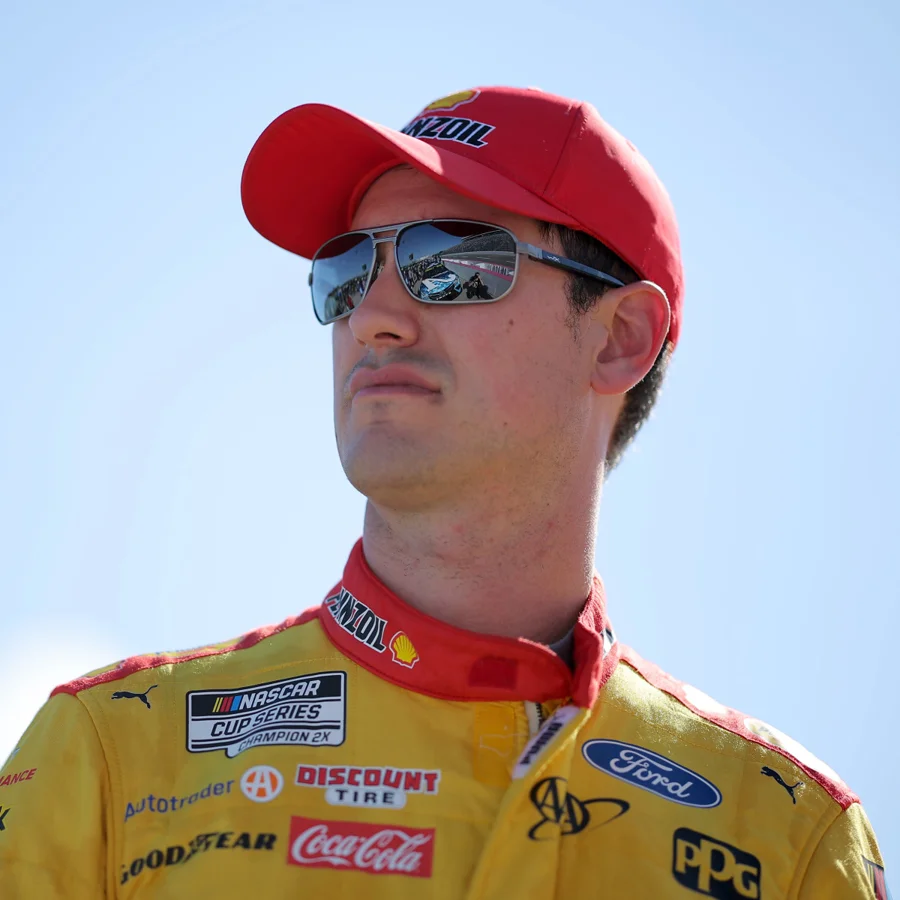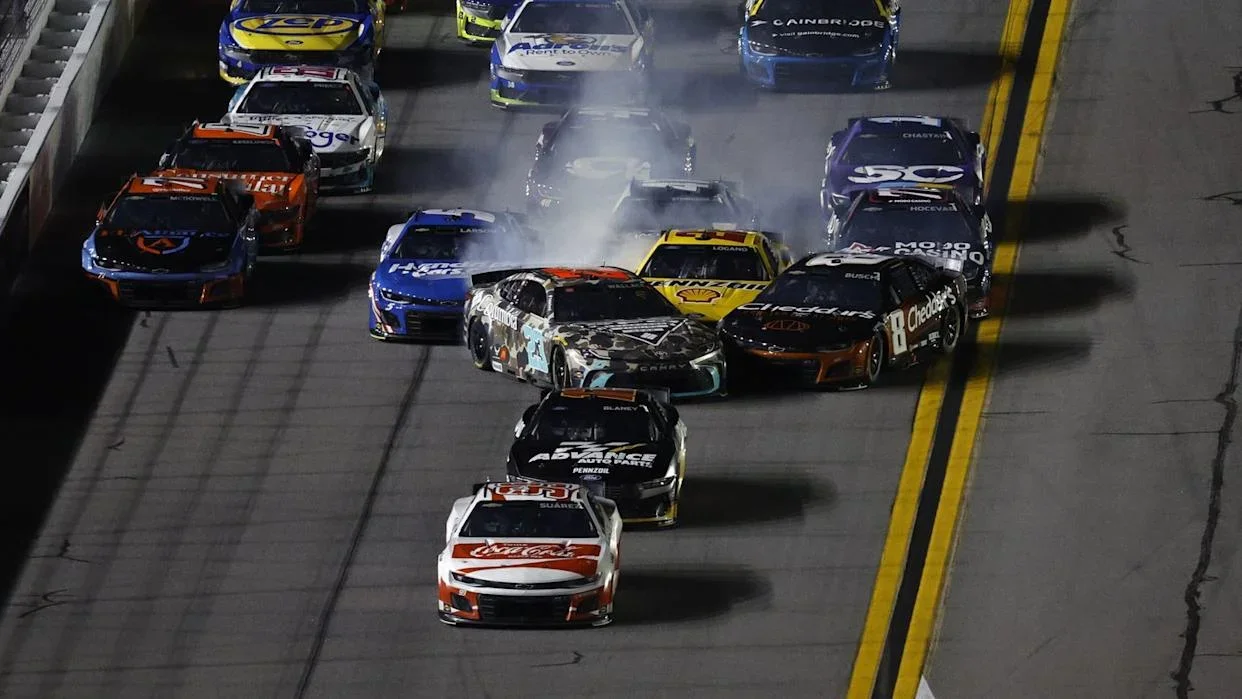A new communications system intended to enhance safety at NASCAR events backfired at Daytona when audio exposed race officials criticizing Joey Logano after his race-changing spin, intensifying the ongoing debate around the Joey Logano Daytona caution controversy. The incident came to light when Bubba Wallace’s spotter Freddie Kraft discussed the unintended broadcast on a recent podcast episode, stirring discussions within racing circles.
Seeking to address earlier challenges with relaying caution flags to teams, NASCAR had implemented upgraded communication technology this season. The device, praised for its clarity, unexpectedly captured more than just necessary updates—it also transmitted raw, unfiltered reactions from race control as the events unfolded during the Daytona race.
Improved Communication System Creates New Issues
The new tech was designed to ensure drivers and teams receive timely, accurate information about race conditions, especially for cautions. In prior races, lapses in radio clarity had reportedly created confusion, an obvious safety issue for competitors speeding around the track. Freddie Kraft broke down how the device functions, for better and for worse:
“So we have a new device that we use to scan race control for the spotters,”
—Freddie Kraft, Bubba Wallace’s Spotter
According to Kraft, the device allows spotters to hear race control almost as if they are sitting beside them—a leap forward compared to earlier, sometimes muddled, radio broadcasts on pit road or from trackside clean-up crews. However, that exceptional clarity had unforeseen consequences during the Daytona event when Logano spun with under 40 laps to go.

“The problem with it is you can also hear, it’s so good that you can also hear some of the stuff that’s going on behind Jusan. And when Logano spun and he kind of drove back up onto the racetrack you could hear some people in the background that were not very happy with him. And used some choice words I can’t repeat because we have sensors on these shows sometimes.”
—Freddie Kraft, Bubba Wallace’s Spotter
What Really Happened During the Daytona Caution?
Daytona’s late stages were relatively incident-free, making Joey Logano’s caution-triggering spin all the more critical. While running up front, Logano lost control and ended up in the infield grass, bringing proceedings to a halt. Race strategy, fan outcomes, and driver safety all hung in the balance for those tense laps. Given that NASCAR typically tries to minimize unnecessary cautions to keep the race moving, officials’ frustrations were laid bare through the new communications feed.
Freddie Kraft highlighted the unintended transparency, underscoring its comedic value even as it revealed tensions within race control:
“We might have to retool that so we can’t hear everything in that room. But it was funny to hear,”
—Freddie Kraft, Bubba Wallace’s Spotter
Kraft attempted to describe the hardware itself, admitting to never having personally used the unit, yet noting positive reviews from his peers regarding its performance:
“I wish I could tell you the name of it. It’s just like a belt pack that you guys use on pit road, but now it’s like an intercom system I think. I haven’t used it yet because I’m superstitious and we had it at Indy and I didn’t use it at Indy and we won. So the other night I didn’t use it because I thought maybe we would win again. Just wrecked the whole field. So I haven’t used it, but it gets rave reviews from the spotters of how clear it is, the tower.”
—Freddie Kraft, Bubba Wallace’s Spotter
Persistent Problems with Caution Flag Communication
NASCAR’s goal with the new technology has been to prevent confusion and improve on-the-fly safety decisions during high-speed, high-stakes races. Historically, spotters receive digital radios with access to race control from the start of the year. However, Kraft said technical hiccups sometimes hinder vital transmissions regarding yellow flags and hazard alerts:
“NASCAR issues us a digital radio at the beginning of the year that has race control in it that we’re supposed to use,”
—Freddie Kraft, Bubba Wallace’s Spotter
Kraft suggested overlapping radio signals or unclear commands could explain why teams occasionally miss real-time caution alerts—a potentially dangerous situation in a chaotic, dynamic environment like Daytona. The new communication devices were meant to improve this, yet their overwhelming clarity risked transmitting unintended, off-the-cuff chatter from officials as well as crucial race directives.
“So we’ve been trying to come up with something different to fix that and this is the next step in that process. But it’s clear as day and maybe it’s a little too clear.”
—Freddie Kraft, Bubba Wallace’s Spotter
Debate and Future Adjustments Likely Ahead
The revelations from Daytona have triggered internal conversations at NASCAR and among key figures like Kraft and Hamilton regarding the best way forward. While officials, spotters, and teams value improved communication—particularly regarding safety—a balance must be struck so personal reactions do not distract or damage professionalism on race day. Joey Logano’s pivotal Daytona moment, now layered with controversy, has become a case study for how technology can both solve and generate new issues in high-stress environments like NASCAR.
As the season progresses, further adjustments to the communication system seem inevitable, ensuring that essential safety updates reach all corners of the track—without creating unwanted distractions or undermining trust between race officials and team members. The Joey Logano Daytona caution controversy will likely remain a talking point as NASCAR works to refine its technological solutions and its internal protocols.
